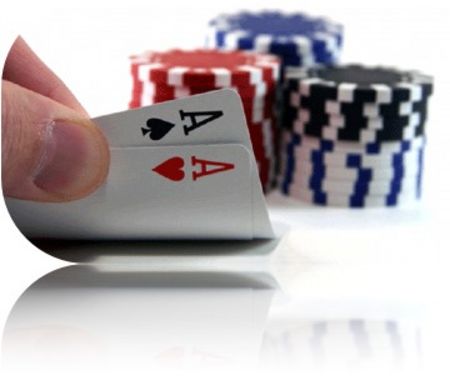Open-ended Draws Using One Card in Your Hand

Sometimes you hold an open-ended draw using only one card in your hand For
example, you hold A ♣ T ♠
with a 9
♦ 8
♥ 7 ♠ flop or a J
♦ 9
♥ 8 ♠ flop. The first thing you
must realize is that these types of draws are not nearly as strong as straight draws
using both cards in your hand:
-
You could already be beat by a flopped straight.
- If you hit your straight, you will have to split the pot with an opponent holding
the same card as you.
- When you hit your straight, you will not get a lot of action since the board will
be too scary for your opponents. For example, if you hold AT with a flop of
987 and a jack or 6 comes, the betting action will quickly dry up. When you
are using two cards, your hand is more concealed, so you can sometimes
raise or even reraise and get a lot of action.
Let's look first at three-connected flops and the various possible hands. We will use
the 987 flop as an example. Obviously. JT would be the best hand, which gives us
the nut straight followed by T6 and 65. Straights would be followed by sets like 99,
88 or 77. Two pair would also be good hands, yet very vulnerable.
All of these hands would then be followed in strength by TT, which is a good open-
ended straight draw with an overpair. The fact that you hold two of the four tens
also reduces the possibility of a flopped straight by your opponents and reduces the
chances of having to split the pot. Another strong hand would be JJ as you now
have an overpair with a gut-shot draw. These overpairs also have some additional
outs if you happen to be against two pair. Finally, another strong hand would be top
pair with the open-ended straight draw, such as T9 in this example. In general, all of
these hands are strong and can usually be played aggressively until your
opponents indicate otherwise
Whenever you draw using only one card and you donít have other possibilities, your
hand is much weaker. You might play a hand such as T4 in the right circumstances,
but remember to include the possibility that your outs could be counterfeited by
another player or that you might have to split the pot. However, if the flop is two-
suited, you should usually fold.
When you decide to draw using only one card with a three-connected flop, you
almost always want to be drawing to the high end. For example, holding A6 with a
987 flop is not a very strong hand. A ten would give you a straight, but an opponent
with a jack would have a higher straight. The only time you might play this hand is
when you are heads up under the proper conditions, or when the pot is large and
you play the hand like a gut-shot draw to the 5.
Three connected cards with a gap could also give you a straight draw. For example,
you hold A8 or 85 with a flop of T97. In general, strategies are practically the same
as discussed above when the flop is three-connected. The main difference is that
now at least one of your cards is not an overcard. With a 987 flop, there are times
when you might hold AT and a ten comes jiving you a pair, which holds up and wins
the pot. You would not have this possibility with a hand like 85 and a T97 flop;
therefore, these types of draws are slightly less valuable. Having said this,
strategies are still very similar as we discussed with a three-connected flop. Decent
hands like K8 or T8 play well with these types of flops.
Straight draws are always more risky with suited flops. When the flop is three-
suited, you should almost always fold your draw, unless you have a semi-bluffing
opportunity against a lone opponent or have added value to the hand such as top
pair. Two-suited flops also create a lot of problems for these types of straight
draws. Against several opponents, you should usually fold. You probably only have
six outs and there is a decent chance you could be beat on the river, Against one or
two opponents, you might play the hand, depending on your assessment of what
your opponents might be holding, the pot odds, and if your draw has any other
added value such as pairs or overcards.
NEXT...Gut-shot Straight Draws

